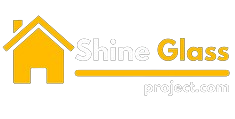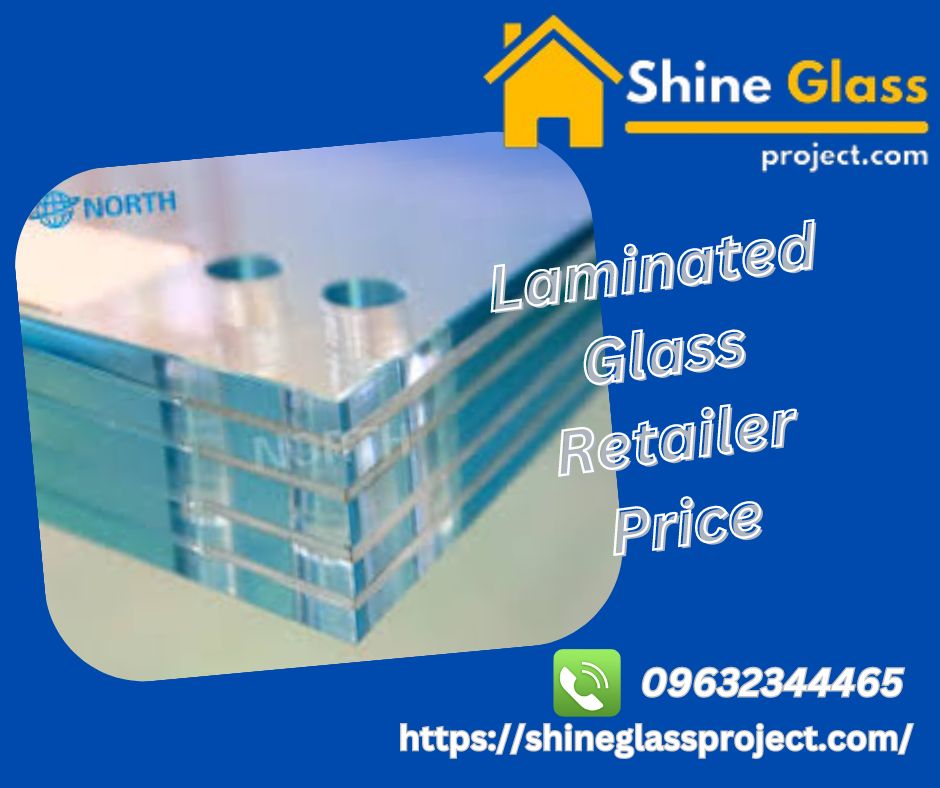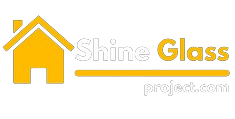LAMINATED GLASS RETAILER PRICE
Welcome to our comprehensive guide on laminated glass retailer prices. Laminated glass is a popular choice in construction and automotive industries due to its safety features and versatility. It consists of two or more layers of glass bonded together with a durable interlayer, typically made of polyvinyl butyral (PVB) or ethylene-vinyl acetate (EVA). This interlayer holds the glass together even when shattered, providing increased strength and security.
As a retailer, understanding the pricing dynamics of Laminated Glass Retailer Price is crucial for offering competitive prices to customers while maintaining profitability. Several factors influence the pricing of laminated glass, including raw material costs, manufacturing processes, customization options, and market demand.
Factors Affecting Laminated Glass Retailer Prices:
- Raw Material Costs: The cost of glass and interlayer materials directly impacts the final price of laminated glass. Fluctuations in raw material prices, driven by factors such as supply and demand dynamics, currency exchange rates, and production costs, can influence retailer pricing.
- Manufacturing Processes: The complexity of manufacturing laminated glass, including cutting, bonding, and curing processes, affects production costs. Advanced manufacturing techniques, such as heat strengthening or chemical strengthening, may contribute to higher prices due to additional processing requirements.
- Customization Options: Retailers may offer various customization options to meet specific customer requirements, such as different glass thicknesses, colors, patterns, or decorative elements. These customizations often involve additional costs, which are reflected in the final retail price.
- Market Demand and Competition: The level of demand for laminated glass products in the market, along with the competitive landscape, influences retailer pricing strategies. Factors such as industry trends, consumer preferences, and competitor pricing play a significant role in determining price positioning.
- Regulatory Compliance: Compliance with safety standards and regulations, such as those set forth by organizations like the American Society for Testing and Materials (ASTM) or the European Committee for Standardization (CEN), may entail additional costs for manufacturers and retailers, which can impact pricing.
Navigating Laminated Glass Retailer Pricing:
As a retailer, it’s essential to strike a balance between offering competitive prices and maintaining profitability. Here are some strategies to navigate laminated glass retailer pricing effectively:
- Cost Optimization: Streamline operational processes, negotiate favorable terms with suppliers, and invest in efficient manufacturing technologies to reduce production costs without compromising product quality.
- Value Proposition: Highlight the unique features and benefits of laminated glass, such as safety, durability, and design flexibility, to justify pricing and differentiate your offerings from competitors.
- Market Research: Stay informed about market trends, competitor pricing strategies, and customer preferences through thorough market research. Adjust pricing strategies accordingly to remain competitive.
- Pricing Transparency: Provide clear and transparent pricing information to customers, including itemized costs for materials, labor, and any additional services or customizations. Avoid hidden fees or unexpected charges to build trust and credibility.
- Customer Segmentation: Tailor pricing strategies to different customer segments based on their needs, preferences, and budget constraints. Offer tiered pricing options or discounts for bulk purchases to incentivize larger orders.
Conclusion:
Understanding the various factors influencing laminated glass retailer prices is essential for effectively managing pricing strategies and meeting customer demand. By optimizing costs, emphasizing value propositions, staying informed about market dynamics, and adopting transparent pricing practices, retailers can navigate the complexities of the laminated glass market while maximizing profitability and customer satisfaction.
The importance of laminated glass retailer price lies in its significant impact on both the business and consumer sides of the market. Here are some key points highlighting its importance:
- **Competitiveness**: Retailer pricing directly affects the competitiveness of laminated glass products in the market. Competitive prices attract customers and enable retailers to capture market share. By offering competitive prices, retailers can effectively position themselves against competitors and increase their chances of success.
- **Consumer Affordability**: Pricing directly influences consumer affordability and purchasing decisions. Laminated glass retailer prices that are too high may deter potential customers, leading to lost sales opportunities. On the other hand, affordable prices make laminated glass more accessible to a wider range of consumers, driving demand and sales volume.
- **Profitability**: Setting the right price ensures that retailers can achieve profitability while covering their costs and generating revenue. Pricing strategies should consider factors such as manufacturing costs, overhead expenses, and desired profit margins to ensure sustainable business operations.
- **Perceived Value**: The price of laminated glass can impact consumers’ perceptions of its value and quality. While low prices may suggest inferior quality, excessively high prices may create skepticism among consumers. Retailer pricing should strike a balance between affordability and perceived value to instill confidence in customers and encourage purchases.
- **Market Positioning**: Pricing plays a crucial role in positioning laminated glass products in the market. Premium pricing strategies position laminated glass as a high-quality, premium product suitable for discerning customers. Conversely, value pricing strategies position laminated glass as a cost-effective solution without compromising on quality. Retailer pricing should align with the desired market positioning to attract the target audience effectively.
- **Customer Satisfaction**: Pricing transparency and fairness contribute to customer satisfaction and loyalty. Customers appreciate retailers who offer competitive prices and value for money. By pricing laminated glass products appropriately, retailers can enhance customer satisfaction and foster long-term relationships with their clientele.
- **Market Dynamics**: Laminated glass retailer prices should adapt to changes in market dynamics, including fluctuations in raw material costs, shifts in consumer preferences, and competitive pressures. Flexible pricing strategies enable retailers to respond effectively to market changes while maintaining profitability and competitiveness.
In conclusion, laminated glass retailer price is essential for maintaining competitiveness, affordability, profitability, perceived value, market positioning, customer satisfaction, and responsiveness to market dynamics. Retailers must carefully consider pricing strategies to achieve a balance between these factors and maximize success in the laminated glass market.
The benefits of a well-considered laminated glass retailer price are numerous and impact both the retailer and the consumer. Here are some key benefits:
- **Affordability**: A competitive retailer price makes laminated glass more accessible to consumers, increasing affordability and expanding the potential customer base. This affordability can lead to higher sales volumes and increased market share for the retailer.
- **Safety Assurance**: Laminated glass offers enhanced safety features compared to standard glass, as it remains intact even when shattered. By pricing laminated glass competitively, retailers encourage consumers to invest in this safer option, providing peace of mind for homeowners, businesses, and vehicle owners.
- **Value Proposition**: A well-priced laminated glass product offers excellent value for money to consumers. The added safety, durability, and aesthetic benefits of laminated glass justify its price, making it an attractive option for those seeking quality and reliability.
- **Competitive Advantage**: Retailers who price laminated glass competitively gain a competitive edge in the market. They can attract customers away from competitors who may offer similar products at higher prices, thereby increasing market share and revenue.
- **Customer Satisfaction**: Transparent and fair pricing practices contribute to customer satisfaction. When consumers feel they are getting a good deal on laminated glass, they are more likely to be satisfied with their purchase and return to the same retailer for future needs.
- **Brand Reputation**: Consistently offering fair and competitive prices on laminated glass builds a positive brand reputation for the retailer. Customers associate the brand with affordability, reliability, and trustworthiness, enhancing brand loyalty and attracting new customers through positive word-of-mouth.
- **Risk Mitigation**: Pricing laminated glass competitively helps retailers mitigate the risk of losing customers to cheaper alternatives or substitutes. By aligning prices with market demand and consumer preferences, retailers can minimize the risk of excess inventory or pricing themselves out of the market.
- **Long-Term Growth**: A sustainable pricing strategy for laminated glass fosters long-term growth and success for the retailer. By balancing affordability with profitability, retailers can maintain healthy profit margins while expanding their customer base and market presence over time.
In summary, a well-considered laminated glass retailer price offers benefits such as increased affordability, safety assurance, competitive advantage, customer satisfaction, brand reputation, risk mitigation, and long-term growth opportunities. Retailers who understand the importance of pricing strategy can leverage these benefits to drive sales and achieve success in the laminated glass market.
The advantages of a well-managed laminated glass retailer price are significant and encompass various aspects of both the business and consumer experience. Here are some key advantages:
- **Cost-Effectiveness**: A competitive laminated glass retailer price allows consumers to access the benefits of laminated glass without breaking the bank. This affordability encourages consumers to invest in the safety and durability of laminated glass, leading to increased sales for the retailer.
- **Enhanced Safety**: Laminated glass provides superior safety features compared to standard glass, as it holds together even when shattered. By offering competitive pricing, retailers promote the adoption of laminated glass, contributing to safer environments in homes, businesses, and vehicles.
- **Improved Market Penetration**: Competitive pricing enables retailers to penetrate new markets and reach a wider audience. Lower prices make laminated glass accessible to a broader range of consumers, including those who may have previously considered it too expensive.
- **Customer Satisfaction**: Transparent and fair pricing practices contribute to customer satisfaction and loyalty. When consumers feel they are getting a good deal on laminated glass, they are more likely to be satisfied with their purchase and return to the same retailer for future needs.
- **Brand Loyalty**: Consistently offering competitive prices on laminated glass builds brand loyalty among consumers. Customers are more likely to trust and remain loyal to retailers that provide affordable options for their needs, enhancing long-term relationships and repeat business.
- **Competitive Advantage**: Retailers with competitive pricing gain an edge over competitors in the market. They can attract customers away from competitors who may offer similar products at higher prices, leading to increased market share and revenue.
- **Risk Mitigation**: Competitive pricing helps retailers mitigate the risk of losing customers to competitors or substitutes. By aligning prices with market demand and consumer preferences, retailers can minimize the risk of excess inventory or losing market share to competitors.
- **Increased Sales Volume**: Lowering the price of laminated glass can stimulate demand and lead to increased sales volume for the retailer. This increased sales volume can offset any potential reduction in profit margins, resulting in overall higher revenue for the business.
In summary, a well-managed laminated glass retailer price offers advantages such as cost-effectiveness, enhanced safety, improved market penetration, customer satisfaction, brand loyalty, competitive advantage, risk mitigation, and increased sales volume. By understanding the importance of pricing strategy, retailers can leverage these advantages to drive success in the laminated glass market.


